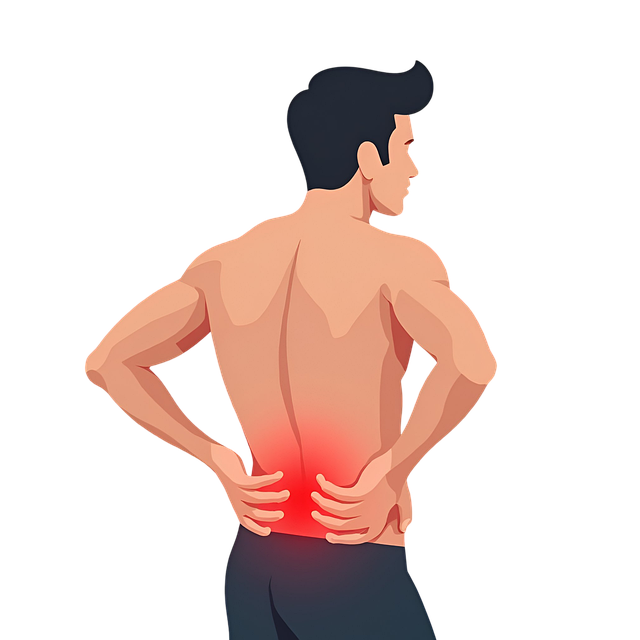Chronic pain, lasting beyond normal healing, disrupts bodily functions leading to physical & emotional struggles. Acupuncture, an ancient TCM practice gaining modern popularity, offers non-opioid relief for back, neck, sciatica, joint pain & migraines by targeting acupressure points to reduce inflammation and enhance self-healing. Qualified acupuncturists, certified by organizations like NCCAOM, conduct detailed consultations & gentle physical exams before inserting thin needles for 30-60 minute sessions aimed at promoting natural healing.
Are you tired of relying on medications to manage chronic pain? Acupuncture offers a natural, drug-free solution for those seeking relief from back pain, neck stiffness, and other persistent aches. This ancient practice has gained modern recognition as an effective treatment for chronic pain conditions. By targeting specific points on the body, acupuncture stimulates healing and blocks pain signals, providing a safe and gentle approach to alleviating discomfort. Discover how this time-honored method can help you reclaim your comfort and mobility without harmful side effects.
- Understanding Chronic Pain and Its Impact
- Acupuncture: An Ancient Practice for Modern Times
- How Acupuncture Works to Alleviate Pain
- Benefits of Acupuncture for Back and Neck Pain
- Other Common Conditions Treated with Acupuncture
- Finding a Qualified Acupuncturist and What to Expect
Understanding Chronic Pain and Its Impact

Chronic pain is a complex condition that significantly impacts an individual’s quality of life. It’s characterized by prolonged pain persisting beyond the typical healing period and can arise from various sources, such as injuries, illnesses, or underlying health conditions. This persistent pain signals a malfunction in the body’s natural communication system between nerves, muscles, and joints, leading to a range of discomforts.
The impact of chronic pain extends far beyond physical discomfort. It can cause emotional distress, sleep disturbances, and fatigue, making daily tasks challenging. Many individuals seeking relief turn to alternative treatments like acupuncture, which has gained recognition as an effective method for managing various types of chronic pain, including back pain, neck pain, and sciatica. Acupuncture offers a natural approach to inflammation treatment, targeting specific points in the body to stimulate healing and promote the body’s self-regulating abilities.
Acupuncture: An Ancient Practice for Modern Times

Acupuncture, an ancient practice that has been used for thousands of years, is experiencing a modern renaissance as a go-to solution for chronic pain relief. This traditional Chinese medicine (TCM) technique involves inserting thin needles into specific points on the body to stimulate natural healing responses. In today’s world, where opioid use and its associated risks are growing concerns, acupuncture offers an appealing alternative for those seeking non-opioid pain management options.
For individuals dealing with various conditions such as back pain, neck stiffness, joint pain, and even migraine headaches, acupuncture can be a game-changer. By targeting specific acupressure points, this therapy helps to reduce inflammation, relax muscles, and improve the body’s overall alignment. Unlike some modern treatments, acupuncture promotes natural healing without the side effects often associated with medications, making it an attractive option for people looking for drug-free pain relief methods.
How Acupuncture Works to Alleviate Pain

Acupuncture works by stimulating specific points on the body, typically using thin needles inserted into these targeted areas. This stimulation triggers the release of natural painkillers, such as endorphins, which are the body’s own opioid-like compounds that effectively reduce pain perception. By targeting these acupressure points, acupuncture can disrupt the brain’s processing of pain signals from various parts of the body, including those associated with back pain, neck pain, and joint pain.
Furthermore, chronic pain often involves inflammation as a contributing factor. Acupuncture has been shown to have anti-inflammatory properties, helping to reduce swelling and inflammation in treated areas. This non-opioid pain relief method offers an alternative approach to managing both acute and chronic pain conditions without relying on medications. It’s particularly beneficial for those seeking natural remedies for pain management, providing a safe and effective joint pain therapy option with minimal side effects.
Benefits of Acupuncture for Back and Neck Pain

Acupuncture has emerged as a powerful tool in the fight against chronic pain, offering individuals a drug-free alternative for managing back and neck pain effectively. This ancient practice involves inserting thin needles into specific points on the body to stimulate natural healing responses. One of its key advantages is its ability to target both the symptoms and the root causes of pain, making it a comprehensive solution for various types of chronic pain conditions.
For individuals seeking non-opioid pain relief, acupuncture can be a game-changer. It has been shown to significantly reduce inflammation, which is often at the heart of many painful conditions, including joint pain and neck stiffness. By promoting natural healing and balancing the body’s energy flow, acupuncture therapy provides a safe and effective joint pain therapy, addressing the underlying issues that contribute to chronic back and neck pain.
Other Common Conditions Treated with Acupuncture

Acupuncture is renowned for its effectiveness in treating a myriad of conditions beyond back and neck pain. For individuals seeking drug-free pain relief, this ancient practice offers a promising alternative for various ailments. Besides chronic pain acupuncture has proven beneficial for conditions such as migraine headaches. By targeting specific pressure points, acupuncturists can alleviate symptoms and promote natural healing. Joint pain therapy, for instance, often incorporates acupuncture to reduce inflammation and restore mobility.
Other common issues that respond well to acupuncture include arthritis, fibromyalgia, and even insomnia. The non-opioid pain relief provided by acupuncture is a significant advantage for those looking to avoid prescription medications or their side effects. This natural approach to healing not only addresses the symptoms but also works towards the body’s overall balance and wellness.
Finding a Qualified Acupuncturist and What to Expect

Finding a qualified acupuncturist is essential for effective chronic pain acupuncture treatments. Look for practitioners with certifications from recognized organizations, such as the National Certification Commission for Acupuncture and Oriental Medicine (NCCAOM). Check their experience, especially in treating conditions like back pain, neck pain, migraine acupuncture, and inflammation. Online reviews can offer insights into their techniques and patient outcomes.
During your first session, expect an in-depth consultation to understand your symptoms and medical history. The acupuncturist will then perform a gentle physical examination and identify specific acupuncture points. You’ll likely lie down on a comfortable mat or bed, and the practitioner will insert fine needles into these points, which may cause minimal discomfort. Treatments typically last between 30 to 60 minutes, focusing on alleviating joint pain therapy and promoting natural healing.
